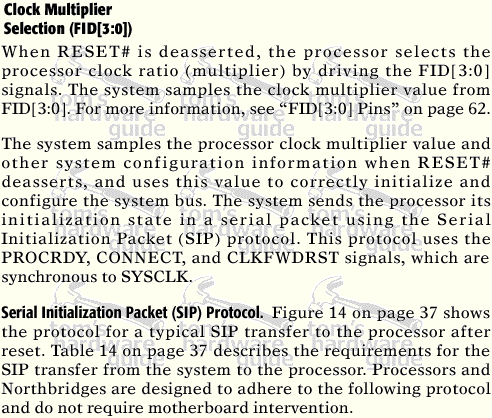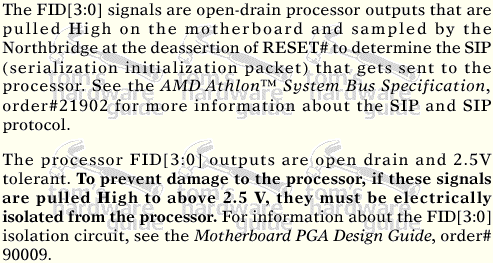Overclocking AMD's Thunderbird and Duron Processor
Overclocking Duron And Thunderbird - The Theory, Continued
Seemingly the processor tells the system (in this case the north bridge), which clock multiplier it would 'like' by driving the FID-pins. Then the system initializes the processor, using the 'Serial Initialization Packet Protocol' = SIP Protocol. This shows that the FID-pins are no input, but output pins, which differs significantly from the BF-pins used by Intel processors in the past, which were input-pins. The AMD-processors get initialized by the SIP-protocol, and whatever this protocol tells the CPU is what it is going to do. Therefore the multiplier for an AMD SocketA processor can be chosen either by modifying the data send by the SIP-protocol, which could be done by the BIOS, or by supplying the north bridge with your own FID-settings, which requires a 'cut' between the north bridge and the actual FID-pins of the CPU.
We are already working on an easy solution to do the latter. However, none of you might ever need to do that, because there is a much easier solution. Read on to find out why.
Get Tom's Hardware's best news and in-depth reviews, straight to your inbox.
Current page: Overclocking Duron And Thunderbird - The Theory, Continued
Prev Page Overclocking Duron And Thunderbird - The Theory Next Page The Voltage Selection For Thunderbird And Duron
